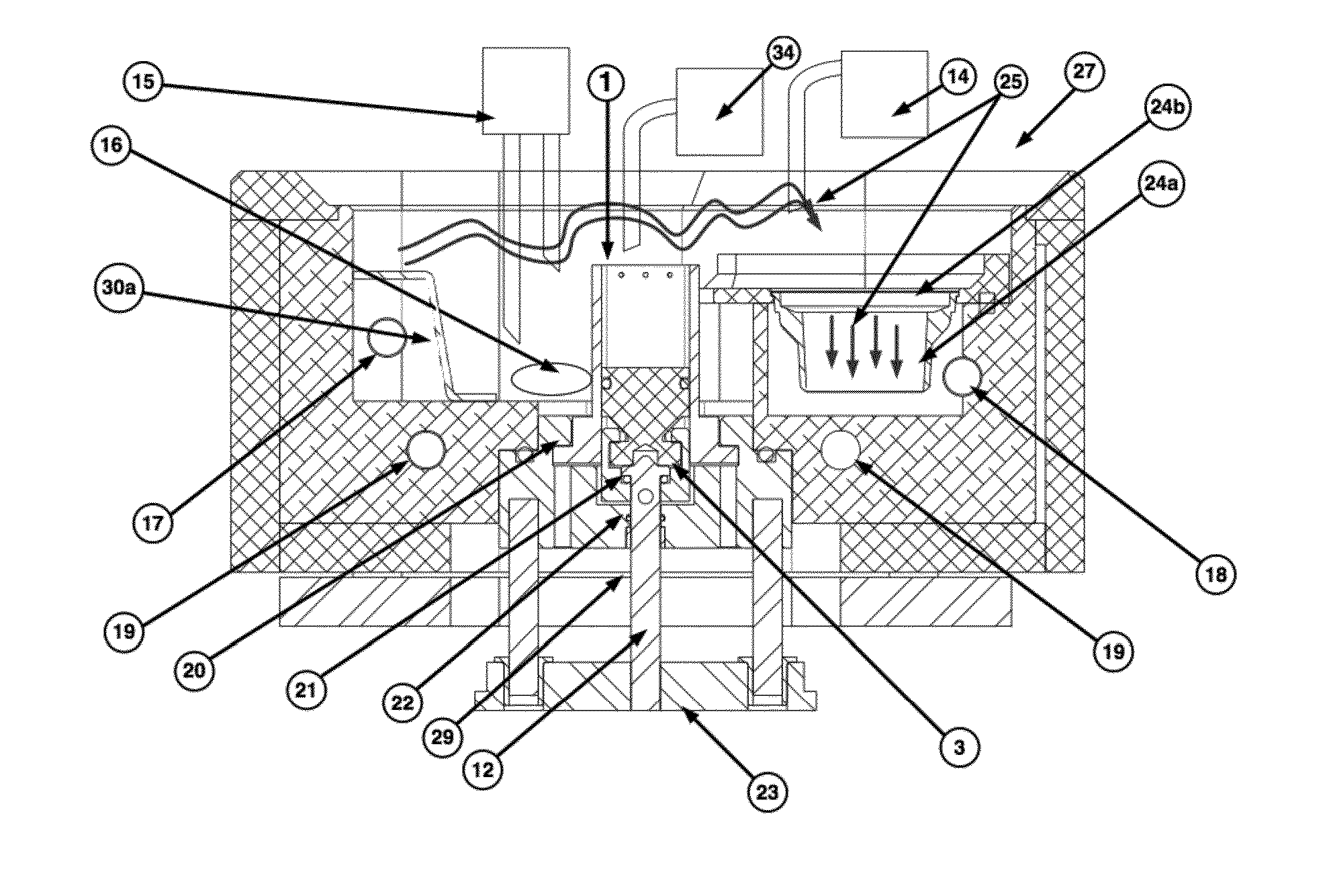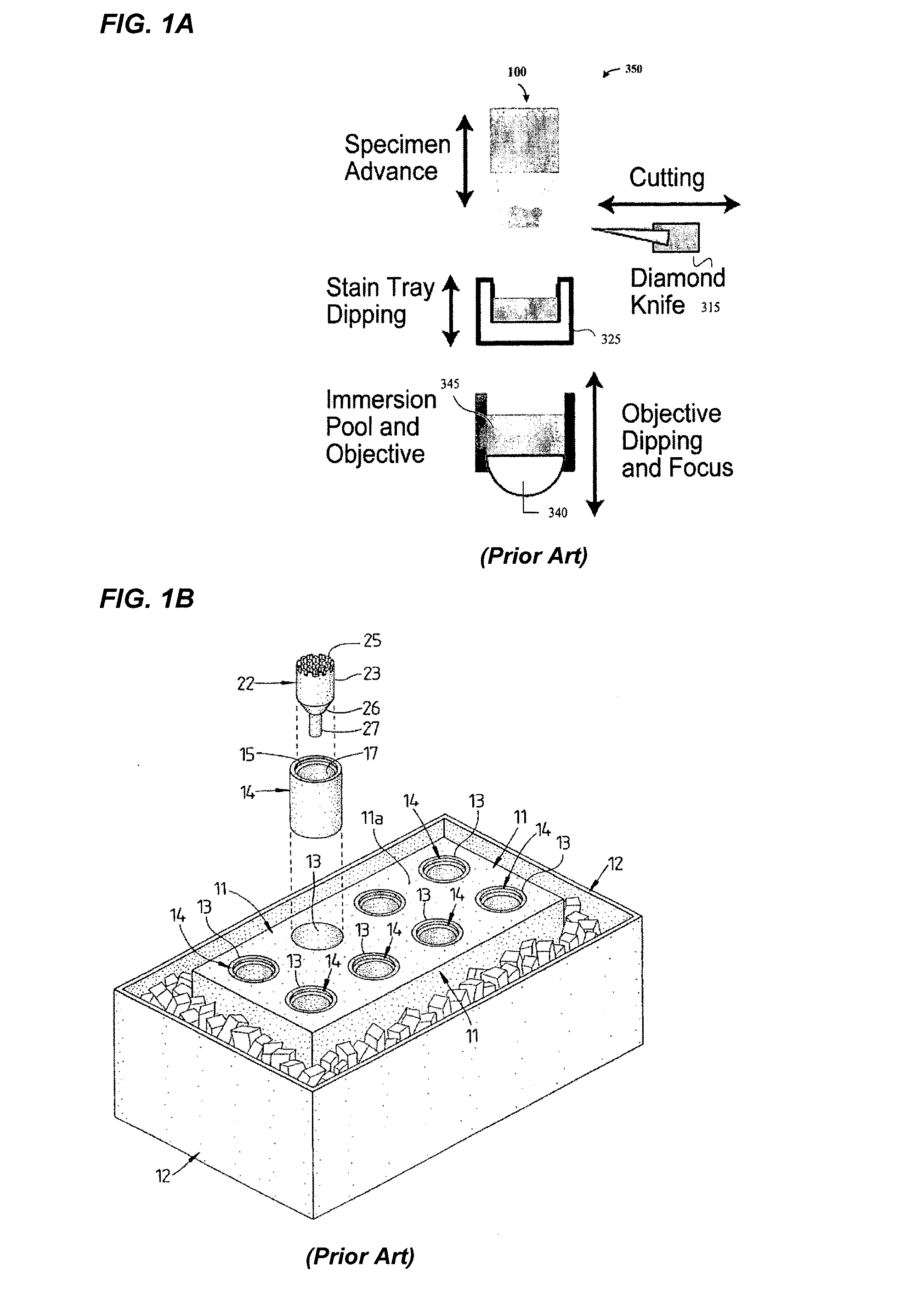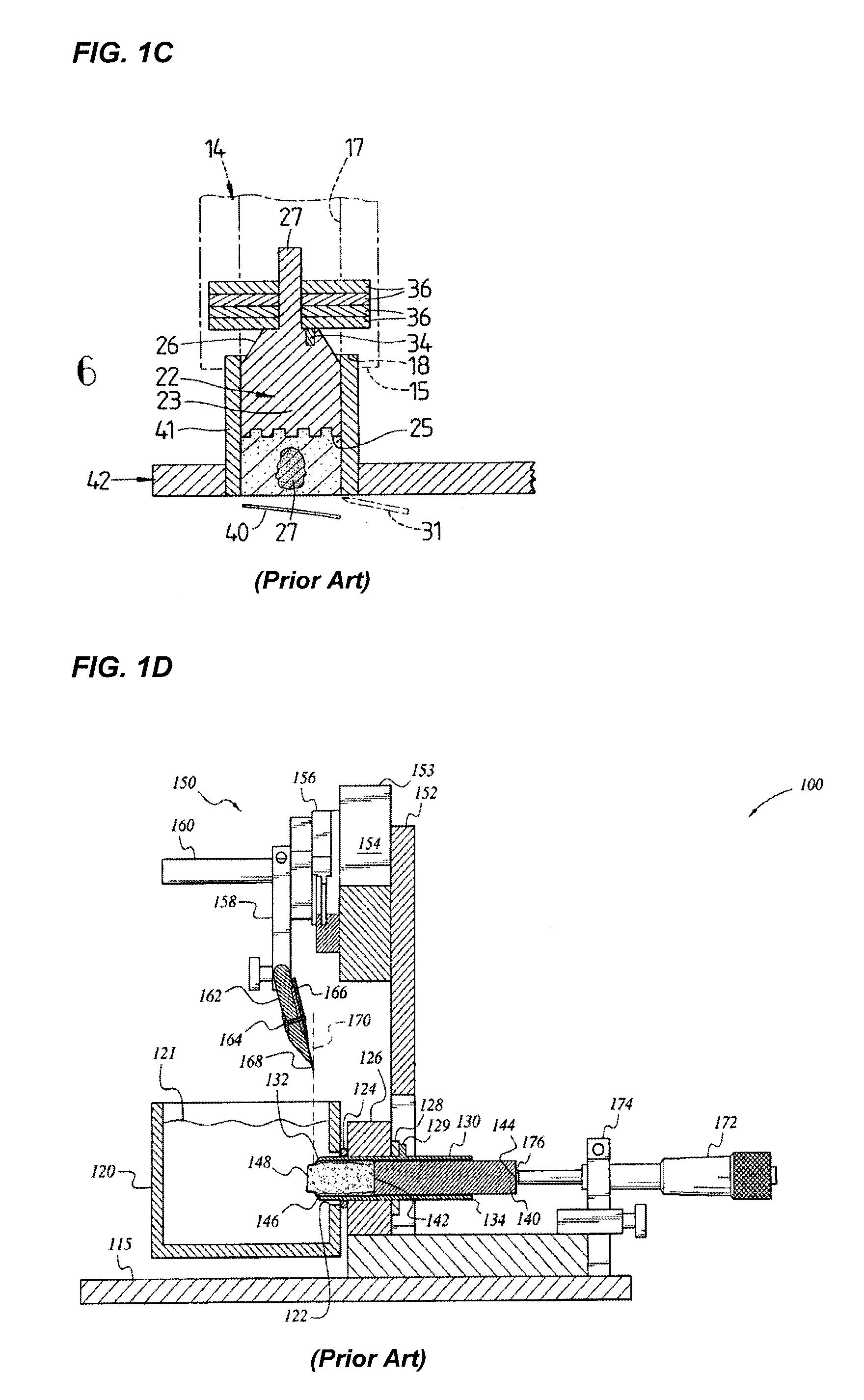Microtome chamber, sample holder and sample processing method
a microtome chamber and sample processing technology, applied in the field of automatic staining, imaging, cutting and collecting samples, can solve the problems of difficult to analyze the features within the sample, the degree of misalignment between successive slices, and the inability to maintain the integrity of the slice, so as to prevent sample damage, connect easily to different instruments, and disassemble easily for storage
- Summary
- Abstract
- Description
- Claims
- Application Information
AI Technical Summary
Benefits of technology
Problems solved by technology
Method used
Image
Examples
Embodiment Construction
[0057]Imaging methods using surface staining to reveal the tissue structure of a sample, with the uppermost surface of the sample being imaged as successive sections are in turn cut and removed provide valuable information on the tissue structure along a depth of the sample. However, the resolution of features within the sample tissue is limited due to penetration of the stain, as the depth of penetration of the stain restricts how deep the sample can be analyzed. Current methods to iteratively stain, image, and cut a sample are complex and incompatible with vibratory microtomes and with samples that need to be in contact with a liquid during all processing steps, such as, for example, a live biological sample. Furthermore, the microtome cannot be used with other samples during staining, which is especially a nuisance when prolonged incubation times are needed to stain the sample.
[0058]Therefore, one can appreciate that the sample holder, according to the disclosure, provides a mean...
PUM
| Property | Measurement | Unit |
|---|---|---|
| thickness | aaaaa | aaaaa |
| thickness | aaaaa | aaaaa |
| thickness | aaaaa | aaaaa |
Abstract
Description
Claims
Application Information
 Login to View More
Login to View More - R&D
- Intellectual Property
- Life Sciences
- Materials
- Tech Scout
- Unparalleled Data Quality
- Higher Quality Content
- 60% Fewer Hallucinations
Browse by: Latest US Patents, China's latest patents, Technical Efficacy Thesaurus, Application Domain, Technology Topic, Popular Technical Reports.
© 2025 PatSnap. All rights reserved.Legal|Privacy policy|Modern Slavery Act Transparency Statement|Sitemap|About US| Contact US: help@patsnap.com



